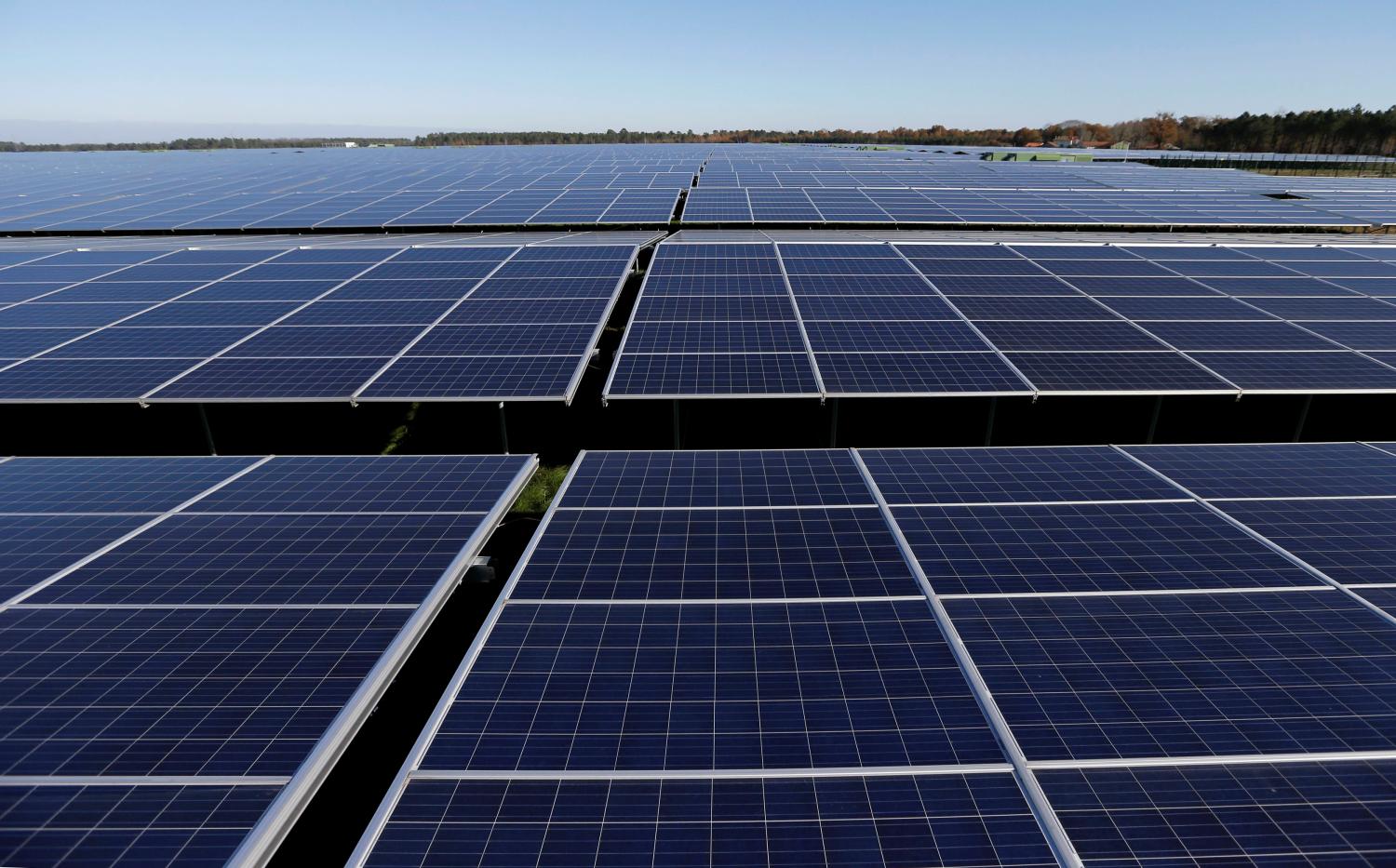Editor’s Note: This post is part of a discussion on the net benefits of low and no-carbon electricity technologies. Discussants include Charles Frank, a nonresident senior fellow in Global Economy and Development at Brookings and Amory Lovins, cofounder and chief scientist of the Rocky Mountain Institute.
In his May 2014 Brookings working paper and blog post, Charles Frank reasonably called for comparing different ways to displace fossil-fueled power plants (and hence cut carbon emissions) by their value, not simply their long-term cost. For example, a kilowatt-hour is worth more at times of system peak load than off peak, and a generator is worth more if it can be cheaply and reliably integrated into the grid.
In July, The Economist devoted a full page to Dr. Frank’s paper and adopted his “clear” conclusion that solar and wind power are the costliest ways to cut carbon emissions while nuclear plants are cheaper, so governments shouldn’t support renewables and sideline reactors.
Those priorities were so contrary to observed market choices that many experts were flooded with incredulous tweets and emails: might Dr. Frank’s startling analysis somehow be right? Had we all overlooked some vital point? Three helpful critiques had been posted by Michael Goggin, Ron Binz and Dan Mullen, and three other experts, but seeing big gaps still remaining, on August 1 I posted my own 12-page critique, summarized below as well as in Forbes and Greentech Media. The Economist also graciously published my caution not to believe everything one reads, even in The Economist.
Big hydro dams make 16 percent of the world’s electricity, but modern renewables now make another 6 percent. In each of the past three years they received over a quarter-trillion dollars of investment (in 2013, $114 billion for solar power and $80 billion for wind power) and added over 80 billion watts. They’re upending power markets in the U.S., Europe, and the world. China’s added capacity in 2013 included 68 percent from renewables (mostly solar and wind), while Europe’s added capacity was 72 percent renewable. Meanwhile, nuclear power is dying from an incurable attack of market forces; some U.S. reactors can’t even compete on operating cost alone.
Dr. Frank nonetheless concluded that new solar and wind power were the least cost-effective ways to displace coal plants, and that new nuclear and combined-cycle gas plants were the most cost-effective. These contrarian priorities flowed from obsolete data. Without changing the methodology, I substituted updated numbers for nine assumptions. This change reversed the ranking of cost-effectiveness: hydropower (on Dr. Frank’s purely economic assumptions) became the most cost-effective carbon-saver, then gas (ignoring its price volatility), then wind, then solar, and last of all nuclear. If we include the market value of the price volatility of gas, it would rank below the renewables.
So what was inaccurate about Dr. Frank’s key assumptions? In his calculations, U.S. solar and wind power are one-third to one-half less productive than they actually were during 2008–13. His calculations assumed that solar power is little more productive on sunny afternoons than its annual average, even though its strong near-coincidence with peak loads is, as he agreed elsewhere, a major source of its value. He assumed solar and wind power capital costs are twice those documented in the 2012–13 U.S. marketplace (and falling fast). Conversely, he assumed combined-cycle gas plants are twice as productive as they were in 2008–13, but did not count methane leakage (which offsets carbon savings) and gas-price volatility (which increases risk and hence cost). He assumed that new nuclear power has half its actual market price per MWh, a construction time roughly half the world average over the past decade, and U.S. operating costs one-fifth what the Nuclear Energy Institute says was the average in 2012. With data like these, his conclusions weren’t surprising—just wrong.
His methodology was equally flawed. He assumed a need for new U.S. generating capacity even though most regions have large surpluses, and national electricity demand has shrunk in five of the past six years despite economic growth in four. He ignored two major no- or low-carbon options: cogeneration and energy efficiency. Each now displaces as much conventional generation worldwide as all non-hydroelectric renewables combined, but at a generally lower cost.
Dr. Frank also posited a need for bulk electricity storage, although four European countries with no or modest hydroelectric resources (unlike, say, Norway) got about half their 2013 electricity consumption from renewables without adding any bulk storage or degrading reliability: Spain, 45 percent; Scotland, 46 percent; Denmark, 47+ percent; and Portugal, 58 percent. How? By running their existing assets, as my colleague Clay Stranger puts it, much as a conductor with a symphonic score leads an orchestra: no instrument plays all the time, but the ensemble continually produces beautiful music.
Dr. Frank analyzed grid reliability in a strange way that experienced grid analysts would not dream of using. Their very sophisticated models already count—correctly —the time-dependent and integration-based costs Dr. Frank sought, but he cited none of their literature. In fairness, he’s in good company: many other smart people also believe the persistent myth that variable renewables (photovoltaics and wind power) can contribute little reliable supply without cheap bulk electricity storage or fossil-fuel backup. These are actually the costliest sources of grid flexibility, so they’d be bought last, not first, and are needed modestly if at all.
This analytic misadventure does hold one interesting policy lesson: counting time-of-day value and grid-integration costs yields the same result as the conventional way of comparing various resources’ long-term “levelized costs.” Why? Grid integration costs are generally small (often a few $/MWh for variable renewables—but probably larger for big thermal stations, whose own integration costs are traditionally socialized but not properly ascribed). And solar power is now often cheap enough (< $50/MWh subsidized, ~$70/MWh unsubsidized) to beat new gas-fired plants anyway; its peak-coincidence only helps it beat, say, California wind power.
Dr. Frank’s recurrent theme is that solar and wind power have very high capital costs and poor performance, hence prohibitive prices. My colleague Titiaan Palazzi’s reconstruction of Dr. Frank’s spreadsheets (sent to him on August 7) shows that using Dr. Frank’s “adjusted” capacity factors, his implicit levelized prices for photovoltaic and wind energy, if he had published them, would be respectively five and four times their unsubsidized market price observed today in the more favorable parts of the United States. These troubling anomalies, like Dr. Frank’s converse implicit finding of about half the actual price for new-build nuclear power, arise simply from his counterfactual assumptions. The results, which drive his conclusions, could be corrected by straightforward comparison with observable engineering and market data. These questions are not abstract but empirical, requiring sound data well understood.
In short, my technical critique of the working paper found many incorrect assumptions, data, and analytic methods. Many energy data, especially about renewables, are in very rapid flux—photovoltaic power, for example, just saw its U.S. market price drop by half in two years—so data even a few years old can yield invalid conclusions. As my colleague Dr. Jon Koomey wrote in his fine paper on errors in energy analysis, “Sorry, Wrong Number” (which inspired the title of this blog), it’s especially important to sound energy policy that analysts use correct data, thoroughly peer-reviewed by deep experts in the subject, to draw valid conclusions.
The Brookings Institution is committed to quality, independence, and impact.
We are supported by a diverse array of funders. In line with our values and policies, each Brookings publication represents the sole views of its author(s).





Commentary
Alternative Energies Debate—Sorry, Wrong Numbers: Reassessing the Net Benefits of Low-and No-Carbon Electricity Technologies
September 3, 2014